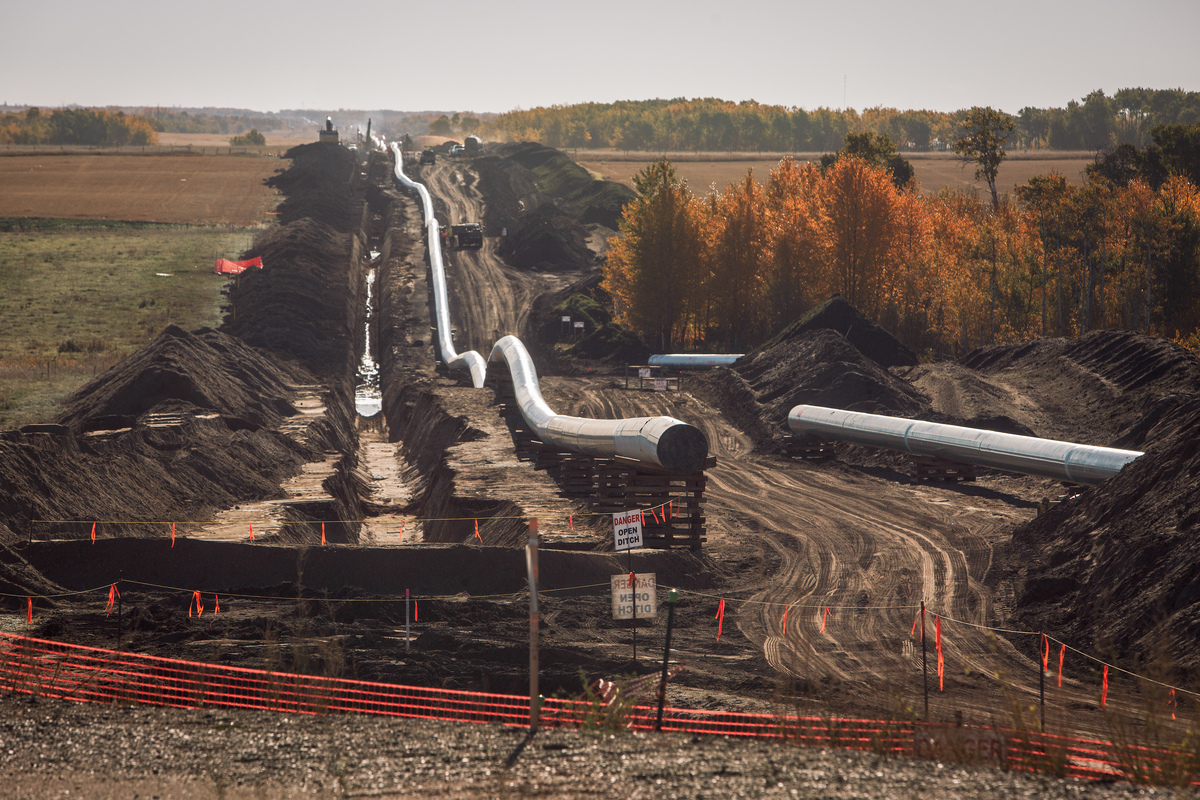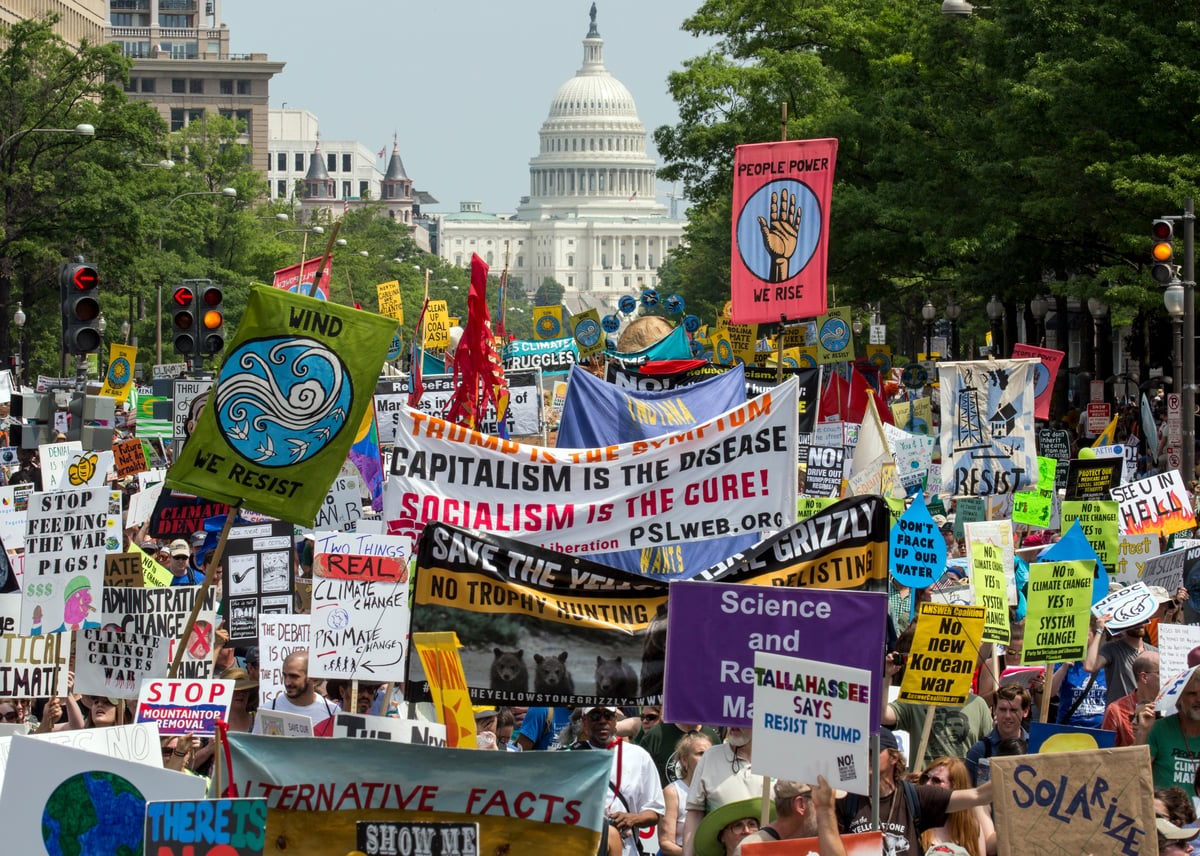Greenpeace Denmark Statement on Greenland
Greenpeace International
Greenpeace Denmark shared the following statement on Greenland on 15 January 2026. Copenhagen, Denmark – Greenpeace Nordic deeply deplores the continued hostility and threats issued towards the people of Greenland by President Donald Trump, his administration and circle of advisors. The people of Greenland must have the right to peacefully determine their own future free from coercion and violence. Regardless of the Trump-regime’s misguided concerns for international security or its desire to pillage and plunder for rare-earth minerals or other resources, the Trump administration needs to be held accountable by the constitutional statutes of the US and the international community. With the recent, illegal military intervention in Venezuela fresh in mind, and the blatant threats towards the people of Greenland, the international community must now act decisively to uphold international law and prevent further harm. ENDS Contact: Greenpeace International Press Desk: +31 (0)20 718 2470 (available 24 hours), pressdesk.int@greenpeace.org (171 mots)
Follow the oil: The logic behind Trump’s first year, foreign policy chaos
John Noel
It feels like a decade…But somehow, Donald Trump has only just clocked one year back in the White House. From intervention in Venezuela to threats against Greenland, from trade tariffs against allies to rambling letters to other Heads of State, it’s an extraordinary and growing list. Once your head stops spinning from the daily deluge of ridiculousness, you can step back and note a common thread running through the madness once you follow the money and the interests behind Trump’s rhetoric. While many were basking in the aftermath of New Year celebrations, US forces were descending into Venezuela to abduct a leader while leaving his regime very much intact. While the US administration suggested an initial rationale of curbing the flow of drugs into the US, the facade soon dropped with Trump declaring control over resources, and in particular oil. “At least US$100 billion will be invested by Big Oil,” Trump said ahead of a White House meeting with representatives of major oil and gas corporations. Trump added that the US and Venezuela were “working well together” to rebuild the nation’s dilapidated oil and gas infrastructure. Despite claiming “US first”, Trump’s actions expose an intent to put the wealth and power of a tiny group of fossil fuel interests and ultra wealthy elites ahead of the wellbeing of US citizens, and the sovereignty and future of people in the countries where he meddles. This is about who controls resources, who profits from them, and who pays the price. Venezuela holds the largest proven crude oil reserves in the world and has long been a target of external pressure, sanctions and geopolitical interference. Trump’s move is the latest intervention in a long pattern of strategic meddling. The Trump administration has tried to portray the move as bolstering US energy security and weakening rivals, but the reality is very different. US households are unlikely to experience any relief at the pump from these interventions. Global crude markets in 2025 already had a surplus of supply over demand, meaning oil prices were low despite a lack of production in Venezuela. And even the most conservative estimates suggest that the Venezuelan oil industry requires investment of more than US$100 billion just to get back to the levels of decades ago. In Trump’s US, it is likely that taxpayers will be on the hook for these costs as Trump socialises the costs to subsidise the private businesses of his donors and supporters. Funneling billions into fossil fuel infrastructure will deepen the global dependence on oil and gas that is driving the climate crisis and biodiversity loss, even when the science tells us there is no room in a safe future for new fossil fuel development. The human costs of resource-driven foreign policy are profound. Military solutions tied to resource control are fundamentally incompatible with international law, human rights, and climate justice. People around the world are already paying the price for decisions made in boardrooms and political offices far from their communities. But as Trump pushes for control of Venezuela’s oil, others are working towards an alternative vision: a world that moves beyond fossil fuels rather than fighting over them. In April, Colombia will host the First International Conference on the Just Transition Away from Fossil Fuels, co-organised with the Netherlands, bringing together governments, Indigenous Peoples, Afro-descendant communities and climate advocates to chart a just transition away from oil, gas and coal. The conference is not about who controls oil reserves, but who shapes our future. The era of fossil fuels must end if we are to avoid the most catastrophic impacts of the climate crisis. What we’re seeing is not random chaos. It’s a clash between two very different visions of the future; one anchored in old power structures built on fossil fuel domination, and the other rooted in climate justice, and sustainable energy for all. People and planet deserve a foreign policy that reflects their interests, peace, safety, economic security, and a stable climate. Reclaim the moral compass: a call for courageous leaders John Noel is a Senior Strategist with Greenpeace International. Texte intégral (1284 mots)



Reclaim the moral compass: a call for courageous leaders
Greenpeace International
To leaders at all levels of government, business, and institutions: We write from many places, in many languages, with one shared hope: to live in a world where peace is the norm, the climate is stable, and our children inherit a future that is brighter than our present. You have a responsibility to reclaim the moral compass. Peace is not a prize, it is a human right. True leadership is built on solidarity, not threats. A healthy society isn’t measured by the profits of a few, but by the well-being of the many. Success isn’t about who wins, it’s about who thrives. We are defined by what we save, not what we take. Donald Trump has said “My own morality. My own mind. It’s the only thing that can stop me.” He and his circle of emboldened autocrats backed by polluting empires and their billionaire owners threaten our shared future. We, the people, across generations and borders, call on leaders everywhere to reclaim the moral compass: This is the responsibility of true and courageous leadership in our time: to resist the billionaire takeover of our culture and future, to rise above the hateful rhetoric of division, and to renew our commitment to decency and each other. We, the people, rally behind leaders who are brave enough to reclaim the moral compass. It will take all of us to break through the fear and noise and show our leaders a better path Texte intégral (536 mots)

Bonaire climate ruling: Moment of truth for Dutch State’s failing climate policy
Greenpeace International
The Hague – On January 28, the District Court of The Hague will rule on whether the Netherland’s current climate policy is unlawful for failing to adequately protect the people of the Caribbean island and Dutch special municipality of Bonaire from the impacts of the climate crisis. It’s the first European adaptation ruling on overseas territories that could have groundbreaking legal consequences worldwide. While the Dutch government does a lot to protect citizens in the European part of the Netherlands from the impacts of climate change, no similar protections have been provided to Bonaire residents, who are already struggling with extreme heat and extreme weather. Bonaire artist and plaintiff, Jackie Bernabela said the Greenpeace-supported lawsuit offers “a glimmer of hope” for the people of Bonaire. “We are resisting the slow erosion of hope. Because hope is the cornerstone of action, and we need action now. Wealth will not save you when the water rises. Power will not save you when disease spreads. Only compassion, courage, and unity. That faintest spark of hope that I and others have can awaken a future worth fighting for,” she said. Eight residents of Bonaire and Greenpeace Netherlands are demanding that a climate adaptation plan be put in place to protect Bonaire locals and that the government reduce Dutch CO2 emissions to zero more quickly. On Wednesday, January 28, at 2 p.m., the District Court of The Hague will rule in the Climate Case Bonaire against the Dutch state. This is the first case in Europe where a judge may order a country to implement an adaptation policy protecting people from the impact of climate change. In the recent International Court of Justice (ICJ) Advisory Opinion in The Hague, the judges unanimously ruled that states must keep global warming below 1.5 degrees and that their climate plans must show maximum ambition, taking into account historical emissions and economic capacity. The Bonaire case is the first major test case on a state’s mitigation and adaptation ambition following the ICJ’s groundbreaking ruling and could set a precedent with global relevance. Marieke Vellekoop, Director of Greenpeace Netherlands, said: “This climate case is crucial. First and foremost for the people of Bonaire, but also for all of us. It is unacceptable and unjust that residents of Bonaire are already experiencing the effects of climate change every day, such as heat and sea level rise, while receiving less protection than people in the European part of the Netherlands. It should not matter where you were born: everyone has the right to protection against floods, storms, and extreme heat.” ENDS Notes: 1. The ruling can be followed at 2 p.m. CET via a livestream from the court. The verdict will be published at 3 p.m. CET on Rechtspraak.nl. 2. Would you like to be present in court? Contact the communications department at voorlichting.rbdh@rechtspraak.nl 3. A fifth of Bonaire could disappear 4. Dutch government puts big polluters above climate and people 5. Bonaire climate case Contacts: Laura Polderman, Greenpeace Netherlands Press Officer: +31 (0)6 2900 1140, laura.polderman@greenpeace.org Greenpeace Netherlands general press number: +31 (0)6 2129 6895 Texte intégral (880 mots)
Previous research commissioned by Greenpeace Netherlands shows that the climate crisis is already affecting daily life on Bonaire. Residents are at great risk due to rising sea levels, extreme weather, and dying coral reefs. People are already experiencing the health effects of extreme heat. Without action, up to a fifth of the island could disappear under water by the end of this century.
Politicians have watered down climate policy in recent years, and the (outgoing) cabinet will not meet the climate target set out in the Climate Act. Instead, the cabinet is providing fossil fuel subsidies and abolishing the CO2 tax for companies. Nor have any decisions been made in the formation of the new government that are necessary to reduce emissions. “The cabinet is protecting major polluters at the expense of the climate and people. We must not only keep the climate targets in sight, we must achieve them and accelerate them. The time for delaying and postponing must now really be over. Only with robust and fair measures can emissions be reduced more quickly. We demand that the Netherlands at least comply with the Climate Act and make its fair contribution to achieving global climate goals. This means reducing CO2 emissions to zero as quickly as possible. This is possible within the Netherlands by 2040,” said Vellekoop.
Residents of Bonaire and Greenpeace have taken joint legal action to demand fair climate policy from the Dutch state. They are being assisted by lawyers from Kennedy van der Laan and Prakken d’Oliveira. The hearings took place on October 7 and 8, 2025, and were attended by the eight plaintiffs from Bonaire.
Bon Pote
Actu-Environnement
Amis de la Terre
Aspas
Biodiversité-sous-nos-pieds
Bloom
Canopée
Décroissance (la)
Deep Green Resistance
Déroute des routes
Faîte et Racines
Fracas
F.N.E (AURA)
Greenpeace Fr
JNE
La Relève et la Peste
La Terre
Le Lierre
Le Sauvage
Low-Tech Mag.
Motus & Langue pendue
Mountain Wilderness
Negawatt
Observatoire de l'Anthropocène
